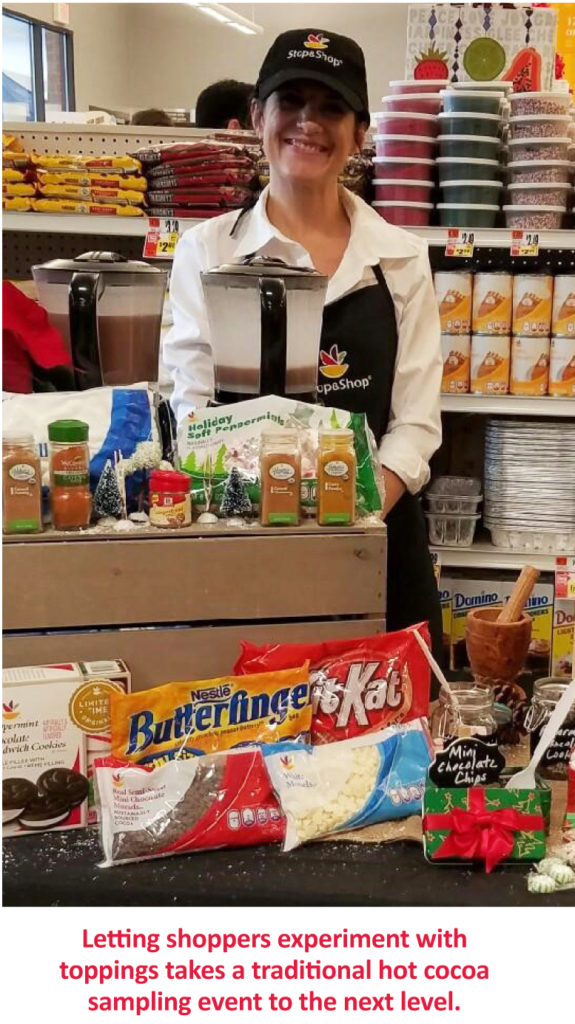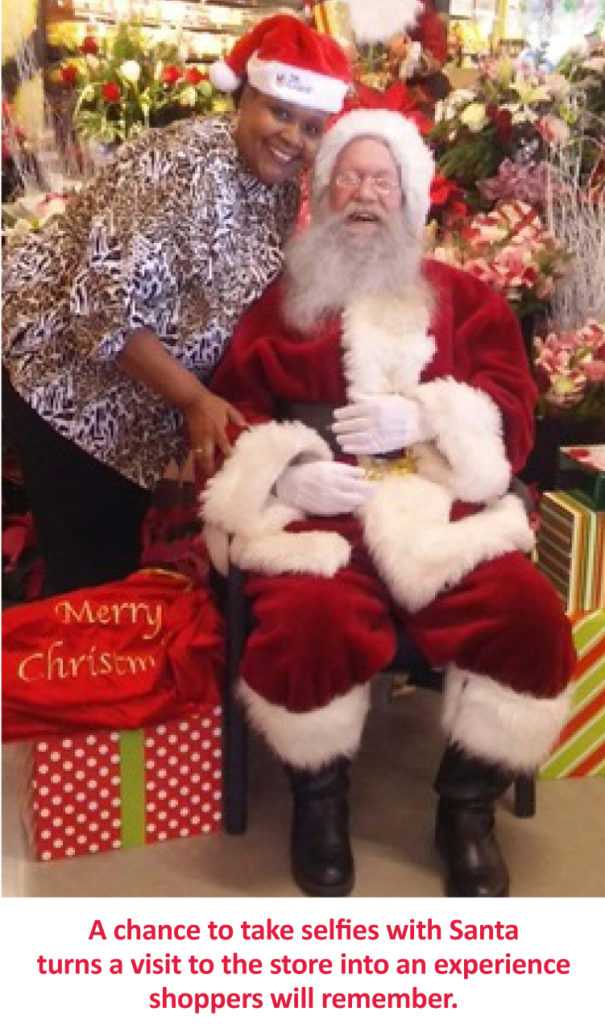 With the kids back in school and the final days of summer upon us, it can only mean one thing—time to start planning for the holidays! “Wait! What happened to fall?” you might be thinking. We know, it seems early. But an early start can mean the difference between using the same-old, ho-hum “ho ho ho” banners from last year and developing a truly unique and differentiated event that surprises and delights customers—and keeps them coming back long after the holidays are over.
With the kids back in school and the final days of summer upon us, it can only mean one thing—time to start planning for the holidays! “Wait! What happened to fall?” you might be thinking. We know, it seems early. But an early start can mean the difference between using the same-old, ho-hum “ho ho ho” banners from last year and developing a truly unique and differentiated event that surprises and delights customers—and keeps them coming back long after the holidays are over.
“Putting together an in-store holiday event typically takes anywhere from six to eight weeks,” says Ryan Dee, Creative Director for Daymon’s consumer experience marketing team. “But more sophisticated events can take even longer. So it’s always best start the process sooner rather than later.”
The winter holiday season, generally defined as the months of November and December, accounts for nearly 20 percent of annual retail industry sales in the United States, according to the National Retail Federation. With an estimated $800 billion at stake, it’s clearly in retailers’ and brands’ best interests to do all they can to help set themselves apart from the competition.
“With digital and online retailing encroaching more and more, retailers really need to step up their game and make their stores a destination,” says Dee. “Everyone’s going to do their holiday circulars and have specials on turkey and ham. To set yourself apart, you have to provide an experience that’s different.”
One effective tactic Dee recommends is targeting more non-traditional holidays, in addition to the “core” Thanksgiving, Christmas and Hanukkah celebrations. “For example, Friendsgiving is a holiday that’s gained more and more traction as an alternative or in addition to Thanksgiving,” says Dee. “Then there’s Festivus—a kind of ‘anti-Christmas’ celebration that started with the popular TV show Seinfeld but has now actually become a holiday people celebrate. Hosting in-store events and advertising around these more avant-garde celebrations can be a bold way for a retailer to differentiate.”
 For retailers and brands who prefer to stick to the more tried-and-true celebrations, Dee suggests expanding upon the usual promotions by looking at new categories to capitalize on. “Pet ownership and spending is at all-time high, so it makes perfect sense to do something around the holidays to celebrate pets as well,” he says. “For example, a grocery retailer could have a pet stocking station for shoppers to put together gifts for their fur babies using items found in the store. This can give shoppers a new reason to come into the store and showcase the variety or products the retailer offers.”
For retailers and brands who prefer to stick to the more tried-and-true celebrations, Dee suggests expanding upon the usual promotions by looking at new categories to capitalize on. “Pet ownership and spending is at all-time high, so it makes perfect sense to do something around the holidays to celebrate pets as well,” he says. “For example, a grocery retailer could have a pet stocking station for shoppers to put together gifts for their fur babies using items found in the store. This can give shoppers a new reason to come into the store and showcase the variety or products the retailer offers.”
Those with bigger budgets looking to truly make an impression might consider tapping into technology to elevate the in-store experience. “For a pretty small footprint in the store, you can create a pretty impressive branded virtual reality experience flying Santa’s sleigh,” says Dee. “Or say you don’t have the space to do a traditional photo activation—you could set up a selfie station and use augmented reality to let shoppers take selfies with an augmented reality Santa and his elves.” This could be tied with social media activations, like sweepstakes and photo contests, which Dee says further drive engagement and ultimately store traffic.
To learn more about partnering with Daymon to develop and execute your holiday consumer experience marketing events, contact Caitlin Shufelberger, Senior Business Development Manager at cshufelberger@interactionsmarketing.com.

